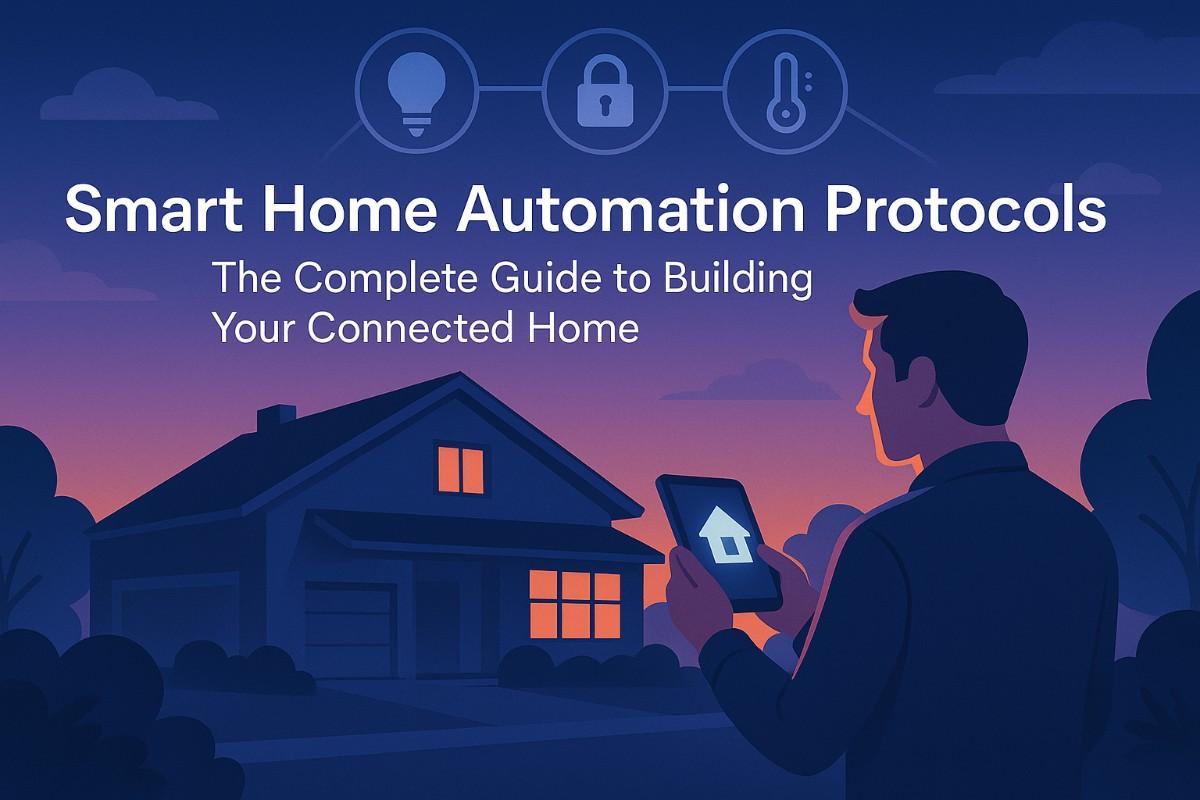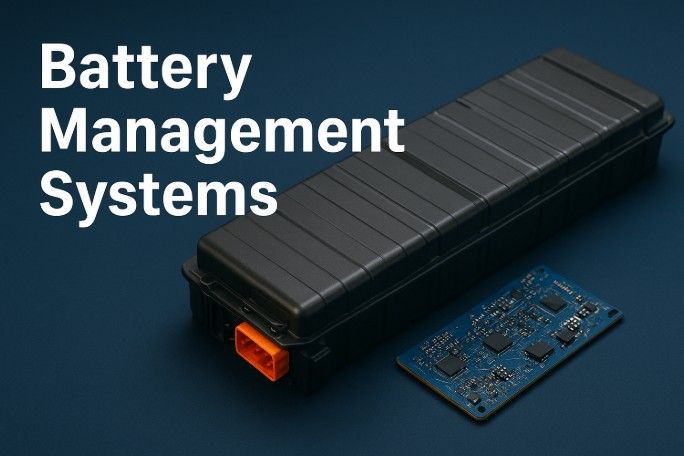Have you ever wondered how your smart thermostat talks to your smartphone, or how your voice assistant manages to control dozens of different devices seamlessly? The magic happens through smart home automation protocols – the invisible languages that make your connected devices work together like a well-orchestrated symphony.
In today’s rapidly evolving smart home landscape, choosing the right communication protocols can make the difference between a frustrating tech nightmare and a smoothly automated living experience. Whether you’re a tech enthusiast planning your first smart home setup or a homeowner looking to expand your existing system, understanding these protocols is crucial for making informed decisions.
Understanding Smart Home Automation Protocols
What Are Smart Home Communication Protocols?
Think of smart home automation protocols as the universal translators of the connected home world. Just like humans need a common language to communicate effectively, your smart devices require standardized protocols to exchange information, share data, and execute commands.
Smart home protocols are essentially sets of rules and standards that define how devices connect, communicate, and interact within your home network. These protocols determine everything from how fast your lights respond to voice commands to how efficiently your sensors report back to your central hub.
The beauty of these protocols lies in their ability to create what we call an IoT ecosystem – a network of interconnected devices that can share data and work together to automate your daily routines. From adjusting your thermostat based on occupancy sensors to automatically locking doors when your security system is armed, protocols make these complex interactions possible.
Why Protocol Selection Matters for Your Smart Home
Choosing the right protocol isn’t just a technical decision – it’s about creating a foundation that will serve your smart home needs for years to come. Here’s why it matters so much:
Compatibility is king. When you select devices that use the same protocol, they can communicate directly without needing additional bridges or translators. This direct communication results in faster response times and fewer potential failure points in your system.
Range and reliability vary dramatically between protocols. Some work best in small apartments, while others can handle sprawling multi-story homes with ease. Understanding these limitations helps you avoid dead zones and connectivity issues.
Power consumption directly impacts your experience, especially with battery-powered devices like sensors and smart locks. Some protocols are designed for ultra-low power consumption, extending battery life from months to years.
Future expandability becomes crucial as your smart home grows. The protocol you choose today will influence which devices you can add tomorrow, potentially saving you from costly system overhauls down the road.
The Big Three: Dominant Smart Home Protocol Standards
Wi-Fi Based Smart Home Solutions
Wi-Fi remains the most familiar and widely adopted protocol for smart home devices, and for good reason. You already have the infrastructure – your home router – and the setup process is typically straightforward.
Wi-Fi-based smart home devices offer several compelling advantages. They provide high bandwidth capabilities, making them perfect for data-intensive applications like security cameras, video doorbells, and streaming devices. The direct internet connection also enables remote access from anywhere in the world, letting you control your home while traveling.
However, Wi-Fi isn’t perfect for every smart home application. These devices tend to consume more power, making them less suitable for battery-operated sensors and switches. Your home network can also become congested as you add more Wi-Fi devices, potentially slowing down your internet experience.
Popular Wi-Fi smart home devices include Amazon Echo speakers, Nest thermostats, Ring doorbells, and most smart plugs. These devices integrate well with cloud-based services and smartphone apps, but they’re dependent on your internet connection for optimal performance.
Zigbee: The Mesh Network Champion
Zigbee has earned its reputation as the go-to protocol for serious smart home enthusiasts, and it’s easy to see why. This protocol creates a self-healing mesh network where each device acts as a repeater, extending the overall range and reliability of your system.
What makes Zigbee particularly attractive is its ultra-low power consumption. Battery-powered Zigbee sensors can operate for years without replacement, making them ideal for door/window sensors, motion detectors, and environmental monitors. The protocol also supports hundreds of devices on a single network, perfect for comprehensive home automation.
The mesh topology means that if one device fails, the network automatically finds alternative paths to maintain communication. This redundancy makes Zigbee networks incredibly reliable, especially in larger homes where signal strength might be challenging.
Major Zigbee ecosystems include Samsung SmartThings, Amazon Echo Plus (older models), Philips Hue (using Zigbee 3.0), and countless sensors from manufacturers like Aqara, Sonoff, and Xiaomi. The protocol’s standardization means devices from different manufacturers often work together seamlessly.
Z-Wave: The Pioneer of Home Automation
Z-Wave deserves recognition as one of the original smart home protocols, and it’s maintained its relevance through continuous evolution and strong industry support. Unlike Wi-Fi and Zigbee, Z-Wave operates on a dedicated frequency band (908.42 MHz in North America), avoiding interference from crowded 2.4 GHz networks.
The protocol’s strict certification process ensures reliable interoperability between devices from different manufacturers. When you see the Z-Wave logo, you can be confident that the device will work with your existing Z-Wave network, regardless of brand.
Z-Wave networks support up to 232 devices and use a mesh topology similar to Zigbee. However, Z-Wave has a hop limit of four devices, which can affect performance in very large installations. The protocol excels in mid-sized homes where its range and reliability shine.
Z-Wave’s strength lies in traditional home automation applications: lighting control, HVAC management, door locks, and security systems. Companies like Aeotec, Ring (for some products), Yale locks, and GE smart switches have built robust Z-Wave ecosystems that integrate well with hubs like SmartThings, Hubitat, and Home Assistant.
Emerging and Specialized Smart Home Protocols
Thread and Matter: The Future of Interoperability
The smart home industry’s biggest challenge has been the fragmentation between different protocols and ecosystems. Thread and Matter represent the industry’s ambitious attempt to solve this problem once and for all.
Thread serves as the foundational networking protocol, creating robust mesh networks with IPv6-based addressing. Think of Thread as the highway system, providing the infrastructure for devices to communicate efficiently and securely.
Matter (formerly Project CHIP) acts as the universal application layer that sits on top of Thread, Wi-Fi, and Ethernet networks. It’s like having a universal translator that allows devices from Apple, Google, Amazon, and Samsung to work together seamlessly.
The combination promises to eliminate the frustrating compatibility issues that have plagued smart homes. Imagine buying any smart device and knowing it will work with your existing setup, regardless of whether you use Alexa, Google Assistant, or Apple HomeKit.
Early Matter-enabled devices are already hitting the market, with major manufacturers like Eve, Nanoleaf, and Aqara leading the charge. As adoption grows throughout 2025 and beyond, Matter could become the unifying force that makes smart homes truly mainstream.
Bluetooth Low Energy (BLE) Applications
Bluetooth Low Energy might not be the first protocol you think of for smart homes, but it’s found its niche in specific applications where its characteristics shine.
BLE excels in personal area networks and temporary connections. Smart locks often use BLE for proximity-based unlocking, allowing your phone to automatically unlock the door as you approach. Fitness trackers, smart scales, and other personal devices commonly use BLE for their low power requirements and smartphone integration.
The protocol’s limited range (typically 30-100 feet) and lack of mesh networking make it unsuitable for whole-home automation. However, for devices that need to interact directly with smartphones or tablets, BLE provides an excellent balance of power efficiency and functionality.
BLE applications in smart homes include August smart locks, some Bluetooth-enabled smart thermostats, and proximity sensors that can trigger automations based on your location within the home.
KNX and Other Wired Solutions
While wireless protocols dominate consumer smart homes, wired solutions like KNX still play important roles, especially in commercial buildings and high-end residential installations.
KNX (formerly EIB) represents the pinnacle of building automation systems, offering unmatched reliability and functionality. The protocol uses dedicated wiring (typically twisted pair cables) to create networks that can handle complex automation scenarios with precise timing and absolute reliability.
The main advantages of wired protocols include guaranteed bandwidth, no wireless interference, and professional-grade reliability. These systems can operate for decades with minimal maintenance, making them attractive for permanent installations where wireless isn’t practical.
KNX installations require professional design and installation, making them more expensive than wireless alternatives. However, for luxury homes, commercial buildings, and situations where absolute reliability is required, wired protocols remain the gold standard.
Protocol Comparison: Which Smart Home Standard Should You Choose?
Range and Coverage Considerations
Understanding the physical limitations of each protocol is crucial for ensuring reliable coverage throughout your home. Let’s break down what you can expect from each major protocol:
Wi-Fi typically provides excellent coverage in most homes, leveraging your existing router infrastructure. However, walls, floors, and distance from your router can create dead zones. Modern mesh Wi-Fi systems can extend coverage, but smart home devices will still be limited by your network’s reach.
Zigbee and Z-Wave mesh networks overcome range limitations through their repeater functionality. Each powered device (plugs, switches, bulbs) extends the network, creating paths that can reach the furthest corners of your home. These networks often provide more reliable coverage than Wi-Fi in large or complex layouts.
Thread promises similar mesh benefits to Zigbee, with the added advantage of IPv6 addressing that could enable more sophisticated routing and network management.
Consider your home’s physical characteristics: concrete walls significantly reduce wireless range, multi-story layouts may require careful repeater placement, and metal construction can create challenging RF environments for any wireless protocol.
Power Consumption and Battery Life
Battery life might seem like a minor consideration, but it dramatically impacts your long-term smart home experience. Nobody wants to constantly replace batteries in dozens of sensors and devices.
Wi-Fi devices generally require constant power due to their high energy consumption. This makes them perfect for plugged-in devices like smart outlets, switches, and always-on appliances, but impractical for battery-powered sensors.
Zigbee and Z-Wave excel in ultra-low power applications. Properly designed sensors using these protocols can operate for 1-3 years on a single battery, making them ideal for door/window sensors, motion detectors, and environmental monitors.
BLE also offers excellent battery life for periodic-use devices, though its limited range restricts applications to personal devices and proximity-based systems.
When planning your smart home, consider the total cost of ownership including battery replacements. A sensor that saves $10 upfront but needs quarterly battery changes could cost more over time than a more expensive device with multi-year battery life.
Device Compatibility and Ecosystem Lock-in
Ecosystem compatibility presents one of the most important strategic decisions in smart home planning. Your choice of protocol often determines which devices you can use and which smart home platforms will support your setup.
Wi-Fi devices generally offer the most flexibility, working with multiple platforms and cloud services. However, they often require specific smartphone apps and may not integrate well with central automation systems.
Zigbee’s open standard means devices from different manufacturers typically work together, though some proprietary implementations (like Philips Hue’s original setup) create artificial limitations.
Z-Wave’s certification program ensures broad compatibility, but the protocol’s licensing requirements mean fewer manufacturers and potentially higher device costs.
Matter promises to eliminate these compatibility concerns entirely, allowing devices to work with multiple platforms simultaneously. However, the protocol is still in early adoption phases, and not all device categories are supported yet.
Consider your long-term strategy: are you committed to a single ecosystem like Apple HomeKit or Amazon Alexa, or do you want the flexibility to change platforms in the future?
Building Your Smart Home: Protocol Integration Strategies
Multi-Protocol Hubs and Bridges
Smart home integration doesn’t require limiting yourself to a single protocol. Modern smart home hubs and platforms support multiple protocols simultaneously, allowing you to choose the best protocol for each specific application.
Samsung SmartThings supports Zigbee, Z-Wave, and Wi-Fi devices natively, with additional protocols available through cloud integrations. This flexibility allows you to use Z-Wave for door locks (where reliability is crucial), Zigbee for sensors (where battery life matters), and Wi-Fi for high-bandwidth devices like cameras.
Hubitat Elevation offers local processing for Zigbee and Z-Wave devices, reducing dependence on cloud services while maintaining broad device compatibility. The platform’s rule engine can create complex automations that span multiple protocols seamlessly.
Home Assistant represents the ultimate in protocol flexibility, supporting virtually every smart home protocol through add-ons and integrations. While it requires more technical knowledge, the platform offers unmatched flexibility and local control.
Protocol bridges can extend your options further. Philips Hue bridges allow Zigbee bulbs to integrate with Wi-Fi networks, while devices like the Bond bridge can control RF-based ceiling fans and fireplaces from smart home systems.
Creating Seamless Device Communication
The key to successful multi-protocol integration lies in creating logical groupings and efficient communication paths between devices. Your smart home hub serves as the translator, enabling devices using different protocols to trigger each other and work together in complex automation scenarios.
Consider organizing devices by functional groups rather than protocol types. Your security system might include Z-Wave door locks, Zigbee window sensors, Wi-Fi cameras, and BLE proximity detectors, all working together through your central hub to provide comprehensive protection.
Automation rules can bridge protocol gaps seamlessly. A Zigbee motion sensor can trigger Wi-Fi smart lights, which then communicate with Z-Wave switches to adjust HVAC settings, creating sophisticated scenes that span multiple protocols without user intervention.
Response time optimization becomes important when mixing protocols. Wi-Fi devices might have slight delays due to internet dependencies, while Zigbee and Z-Wave devices typically respond instantly. Design your automations to account for these timing differences, perhaps using faster protocols for critical safety functions.
Common Smart Home Protocol Challenges and Solutions
Interference and Network Congestion
Radio frequency interference represents one of the most common yet overlooked challenges in smart home deployments. Understanding and mitigating interference can dramatically improve your system’s reliability and performance.
2.4 GHz congestion affects both Wi-Fi and Zigbee devices, as they share spectrum with microwave ovens, baby monitors, and countless other household electronics. This congestion can cause connection drops, slow response times, and reduced range.
Strategic channel selection can alleviate many interference issues. Most routers automatically select Wi-Fi channels, but manually choosing channels 1, 6, or 11 (which don’t overlap) can reduce conflicts. Similarly, Zigbee networks should use channels that don’t overlap with your Wi-Fi channels.
Physical placement of devices affects performance significantly. Zigbee and Z-Wave hubs should be positioned away from Wi-Fi routers, and metal objects can create RF shadows that disrupt communication. Sometimes moving a hub just a few feet can eliminate persistent connectivity issues.
Mesh network optimization requires understanding how devices communicate. Placing powered repeater devices (smart plugs, switches) strategically can create strong mesh networks that route around interference sources automatically.
Security Vulnerabilities and Best Practices
Smart home security extends far beyond just protecting against hackers – it’s about creating resilient systems that maintain privacy and function safely even when components fail or networks are compromised.
Default passwords represent the biggest security vulnerability in most smart homes. Every device should have its default credentials changed immediately after installation. Use unique, strong passwords for each device, and consider a password manager to handle the complexity.
Network segmentation provides an additional security layer by isolating smart home devices from your main network. Many modern routers support guest networks or VLANs that can contain smart devices, preventing potential compromises from accessing personal computers or sensitive data.
Regular firmware updates close security vulnerabilities, but many smart home devices don’t update automatically. Establish a routine for checking and applying updates, particularly for security-critical devices like locks and cameras.
Local processing reduces privacy risks by keeping data within your home network. Platforms like Hubitat and Home Assistant can operate without cloud dependencies, giving you complete control over your data and maintaining functionality even during internet outages.
Encryption standards vary between protocols, with newer standards generally offering better protection. Zigbee 3.0 and Z-Wave Plus provide strong encryption, while older devices may use weaker security. When possible, choose devices that support current encryption standards.
Future-Proofing Your Smart Home Automation System
The smart home landscape continues evolving rapidly, with new protocols, standards, and technologies emerging regularly. Future-proofing your investment requires balancing current needs with anticipated developments.
Matter adoption represents the most significant change on the horizon. While current Matter devices are limited, the protocol’s backing by major tech companies suggests widespread adoption is inevitable. Consider prioritizing Matter-compatible devices for new purchases, especially for long-term installations like built-in switches and outlets.
Open source platforms provide the most flexibility for future changes. While proprietary systems might offer better initial user experiences, open platforms like Home Assistant, OpenHAB, and Hubitat allow you to adapt to new technologies without replacing your entire system.
Modular design principles help your smart home evolve gracefully. Instead of monolithic systems that require complete replacement when upgrading, design your automation around functional modules that can be updated independently. This approach reduces costs and disruption when adopting new technologies.
Standard-based choices generally age better than proprietary solutions. Protocols with industry-wide support and open specifications tend to receive longer support and have more device options than closed ecosystems.
The future of smart home automation lies in seamless interoperability, where devices from any manufacturer work together effortlessly. By understanding the strengths and limitations of current protocols while keeping an eye on emerging standards like Matter, you can build a smart home that serves your needs today while remaining adaptable for tomorrow’s innovations.
Remember, the best smart home automation protocol is the one that reliably serves your specific needs while providing room for growth. Whether you choose the reliability of Z-Wave, the flexibility of Zigbee, the familiarity of Wi-Fi, or prepare for the interoperability of Matter, success comes from understanding your requirements and designing systems that prioritize functionality over complexity.
Your smart home journey doesn’t end with protocol selection – it evolves as your needs change and technology advances. By building on solid protocol foundations and maintaining flexibility in your approach, you’ll create a connected home that truly enhances your daily life while remaining ready for whatever innovations the future brings.




